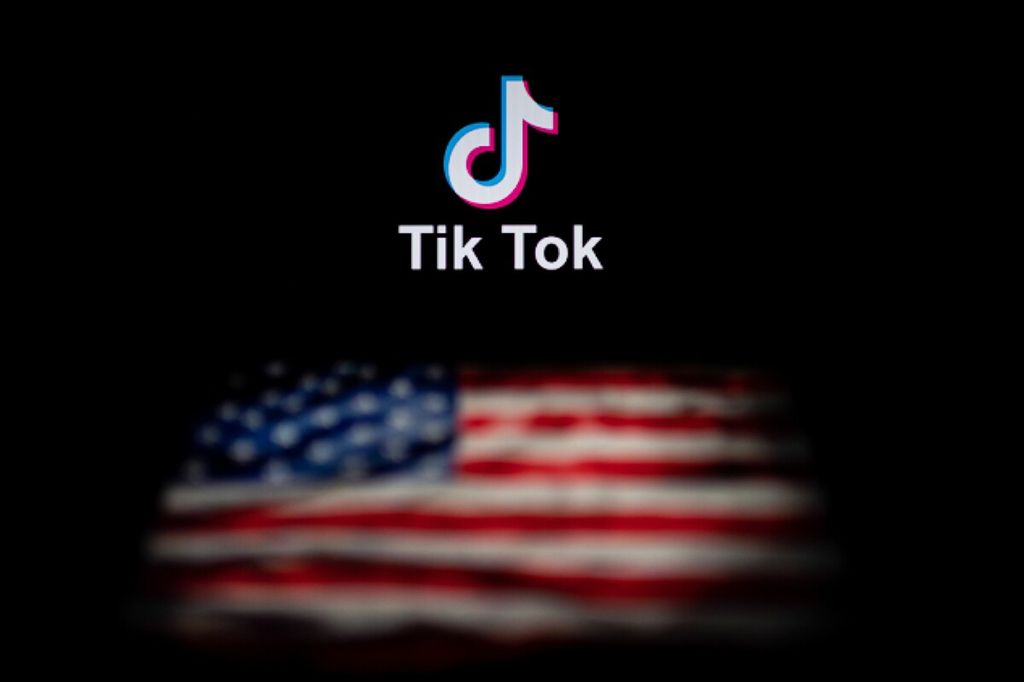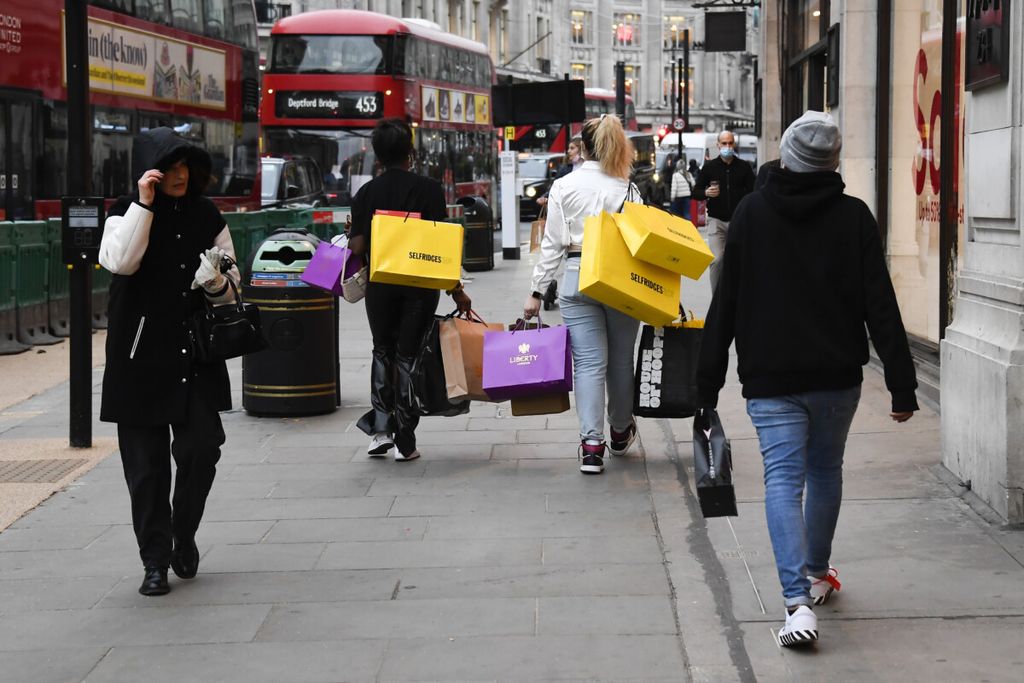Notes on Turbulent 2020
The most apparent one is the Covid-19 pandemic. However, no less important is the change in US-China relations, moving in the direction of competition, even enmity.

In this file photo illustration taken on September 14, 2020, shows the logo of the social network application TikTok and a US flag on the screens of two laptops in Beijing. - The Trump administration said on September 20, 2020 it would not back down from a plan to ban new US downloads of the popular video-sharing app TikTok, setting up a court showdown ahead of a Sunday deadline.
The year 2020 is drawing to a close. This year may serve as a delineating line between the world previously known as a global community and a model of the future in its as yet indistinct form.
The model of mobility in the flow of capital, goods and people characterizing the world economy will likely change. There are two main factors behind this change. The most apparent one is the Covid-19 pandemic. However, no less important is the change in US-China relations, moving in the direction of competition, even enmity.
What has come to the surface is the trade war, which gotten even more intense during the term of President Trump. Behind it is the rivalry to become the world’s superpower. The US, which after the fall of the Soviet Union has enjoyed its supremacy as the sole superpower, feels disturbed by the rise of China.
Some hold the view that the trade war has worsened the world economic crisis caused by the pandemic. But others maintain that the trade war for several countries like China brings about economic smoothing so that the shock effect of the pandemic is not too severe (crash landing). The International Monetary Fund (IMF) has several times changed the world economic outlook from optimistic to pessimistic and later back to optimistic.
Also read: President: Do not Lose Hope
This happens because many factors related to the future expectations of the public, producers as well as consumers, cannot be properly detected. Moreover, different governments prefer to adopt flexible and measured responses to drastic (sweeping) policies.
It can be noticed in the outlook of the IMF that gives a V pattern with its not so deep growth contraction in 2020 (minus 3.3 percent) and quick growth recovery (6 percent in 2021) for countries subsumed in the Emerging and Developing Asia that includes China, India and ASEAN-5.
Meanwhile, the V pattern for Europe comes from a deeper growth contraction (minus 8.3 percent) and a lower positive growth (5.2 percent).
Contraction installments
There was an interesting pattern after the US-China trade war broke out in quarter III-2018. Indonesia experienced a fairly significant negative quarterly (q-to-q) growth in quarter IV-2017 (minus 1.71 percent), followed by a slight improvement but still negative at 0.41 percent in quarter I-2018. This pattern repeated in the following year. It recurred at the end of 2019, the difference was that the growth was more negative in quarter I-2020, when the pandemic began to strangle the world.
Approximately 64 percent of the Gross Domestic Product comes from the sector of medium, small and micro enterprises (MSMEs).
Apart from the impact of government policies, the seasonal pattern seemed to cause smoothing so that the contraction was not too deep in quarter II-2020. As announced by Statistics Indonesia (BPS) on a quarterly basis, there was no contraction in quarter II, even the q-to-q economic growth was 5.05 percent although the year-on-year (y-o-y) rate was minus 3.49 percent. This situation was due to the as yet not so high rate of the informal economy. Approximately 64 percent of the Gross Domestic Product comes from the sector of medium, small and micro enterprises (MSMEs).
/https%3A%2F%2Fkompas.id%2Fwp-content%2Fuploads%2F2020%2F07%2F20200723ZAK08_1595514797.jpg)
A woman arranges a display of locally produced coffee on Thursday (23/7/2020) at a business meeting on micro, small and medium enterprises (MSMEs) in Mataram, West Nusa Tenggara (NTB). Local MSMEs have developed superior products from the NTB administration’s economic assistance for earthquake-affected communities. Today, MSMEs in Lombok have said they have been encouraged by the transition to the “new normal” phase of the Covid-19 mitigation measures.
The main advantage of small businesses is flexibility, especially in the face of business slowdown resulting from an economic shock (Krasniqi and Williams, 2020). Their weakness involves the scale problem that will be an impediment to business expansion.
Policy complexity
In macro terms, the domination of MSMEs will produce a time lag in the economy during economic contraction. This time lag gives an opportunity to the government to draw up policies in appropriate order while solving the problem of coordination.
There’s a time lag of around three months between the start of national economic recovery (PEN) planning and its implementation. The absorption of PEN funds cannot run smooth simultaneously either. Until mid-November, the amount absorbed reached 58.7 percent or Rp408.61 trillion. It gives relief that the realization of allocations to MSMEs already achieved 84.1 percent (Rp96.61 trillion). In the meantime, social aid absorption was already 82.4 percent (Rp193.07 trillion).
At the same time, the large-scale social restrictions (PSBB) policy still provides sufficient room for small business operation so that economic informality is optimized at the time it is needed. Although allocations to other groups are mostly still below 55 percent, this strategy maximizes the driving force of budgets when absorption is not yet optimum and extends the room and time for policies (buying time).
Also read: Agriculture and Food 2020
As described by the concept of Game Theory, the economy results from an interaction between various parties, including the government. The time lag also requires that in every policy there’s proper management of public expectations by means of signaling before policy implementation. It’s to ascertain whether the expectations are forward looking as well as making flexible adaptation by examining the feedback loop, so that the process is more like that depicted by Jovanovic (1982) as the matching of various policy alternatives and their results expected in which both are in the form of statistical distribution.
The solution of this game may constitute an indeterminacy so that it needs realignment because the existing expectations are faced with uncertainty due to the pandemic. The groups in Whatsapp have brought what could only be imagined by Lucas in 1972 into reality. The diverse groups in society have different expectation formations so that various possibilities can arise as described by Shea (2008) as real rational expectation with indeterminacy, making policies frequently constitute a multitarget spectrum.
The government did it for the first time in June in socializing PSBB relaxation and it wasn’t PSBB annulment although it was only implemented in July. Later in September the government declared the vaccination program although its implementation is tentatively at the end of 2020 or the beginning of 2021. It was aimed at giving an opportunity to the sector of MSMEs to rise because demand and production in this sector cannot be separated from each other (Wagener and Zenker, 2020). Recovery a la V in the accommodation and restaurant sector whose quarterly growth in quarter III was 14.79 percent after dropping in the previous quarter to minus 22.31 percent, is dominated by micro food and beverage businesses.
The next example resembling the strategy of breaking waves on the shore is the change in the long-vacation plan originally meant to be used to revive the regional economy at the year’s end. The new strategy is the division into two phases in order to prevent crowding. This is done on the basis of the experience in the long holiday of end-October that gave rise to a surge in new confirmed cases. It’s because expectation formations between middle and lower classes can be different as shown in the Index of Consumer Confidence (IKK).

People carry shopping bags in Regent Street, as non-essential shops are allowed to reopen after England\'s second lockdown ended at midnight, in London, Wednesday, Dec. 2, 2020. Pfizer and BioNTech say they\'ve won permission Wednesday for emergency use of their COVID-19 vaccine in Britain, the world\'s first coronavirus shot that\'s backed by rigorous science -- and a major step toward eventually ending the pandemic. (AP Photo/Alberto Pezzali)
The perception of pandemic control affects the behavior of middle-class consumers, who increase the amount of income saved. The long-holiday division besides being based on health reasons is also meant to influence the expectation of the upper middle class so as to make normal spending. In the meantime, the lower middle group expects the economy to keep running because this will minimize the chance of workers’ dismissals.
Also read: Optimism in Welcoming Vaccines
However, there’s no total ban on vacationing because the effect of its notification is feared to bear a negative impact on the PMI (purchasing manager index) of the manufacturing sector and the IKK as was the case in October. This is a signal of dismissals in the future that makes the lower middle class conservative in spending their income.
The PMI rate was already back to the expansion zone, reaching 50.6 in November after its decline to 48.6 in October.
With the expectation management strategy, forward looking variables until the latest observation in November showed improvements. One of them is the production index, which is the PMI of the manufacturing sector. The PMI rate was already back to the expansion zone, reaching 50.6 in November after its decline to 48.6 in October.
This can be confirmed from the rising imports with production orientation. Basic/complementary material imports in November increased by 13 percent over the October level, a turning point after successive decreases since February. What’s more encouraging is that capital goods imports rose by 31 percent.
As for consumers, although still below 100, the limit between optimism and pessimism, the IKK in November significantly soared to 92 from 76 in October. It was prompted by the consumer expectation index (IEK), which improved for the economic condition of the next six months despite their present pessimism. This index rose sharply from 106.6 in October to 123.9 in November. The hike was only made possible by the improvement of the future expectation of society.
Projection for 2021
With the various descriptions for November, the situation seems to progress in a better direction in 2021, coupled with the declaration that vaccines will be provided gratis. The IMF ventures to put the rate at 6.1 percent (y-o-y) for next year’s growth. The World Bank as usual is more conservative and gives a maximum of 4.4 percent, while the National Development Planning Agency (Bappenas) makes it 5 percent as a sustainable figure.
Based on the latest developments in November, the situation is leading more toward optimism. For this reason, the writer estimates the growth in 2021 at around 4.8 to 5.1 percent.
/https%3A%2F%2Fkompas.id%2Fwp-content%2Fuploads%2F2019%2F11%2FAri-Kuncoro_75152262_1572887656.jpg)
Ari Kuncoro
External macro developments also seem quite supportive of the above economic growth scenario. During November the rupiah exchange rate was around Rp14,100-Rp14,200. This balance was backed by two factors: capital inflow and trade balance surplus. The trade balance surplus until November had been recorded for seven consecutive months. The movement of foreign portfolio capital inflow is no longer exogenous, but it’s also according to the handling of macroeconomic and health affairs. How the vaccines are distributed will be a major element in the management of public expectations.
Ari Kuncoro, Rector, University of Indonesia
This article was translated by Aris Prawira